19. A Deep Dive into AmBr, part 1

It was recognized from the beginning of silver gelatin emulsions that ammonia in the recipe made a faster emulsion. In 1878, D.C.E. van Monckhoven, a Belgian scientist, made an emulsion with ammonia. In 1881, Josef Maria Eder, an Austrian scientist who made incalculable contributions to photography for most of his 89 years, wrote in his book,
Modern Dry Plates: Or, Emulsion Photography, p 24:
"Be the causes what they may, there is no doubt about the value of ammonia in regard to sensitiveness; and, personally, I believe that the formation of the sensitive modification of bromide of silver depends upon and varies with the solubility of the latter in ammonia."
Three years later, building on the work of Hermann Wilhelm Vogel, Eder discovered that erythrosine was an excellent green sensitizer and thereby perfected orthochromatic emulsions.
Speed and spectral sensitivity have been first order goals for most of the history of chemical photography, but especially in the beginning. If they could be delivered together in one emulsion, so much the better. Because Eder developed so many of the early formulas, and wrote prodigiously, it is no surprise that from the beginning sensitization has been done with ammoniacal emulsions. If there is an early recipe that sensitizes a plain silver emulsion, I haven't stumbled over it. But also, there aren't any reasons published that discourage the idea, so I decided I might as well give it a try. And I have been very, very pleasantly surprised.
If you have excellent ventilation in your darkroom, making converted/ammoniacal silver is no problem. But a fact about ammonia is that the stuff stinks. It really stinks in its concentrated form. With so much darkroom work being done today in make-do spaces, the odor of ammonia can be a hindrance to deeper technique. But the health and happiness of your nose isn't the only reason, or even most compelling reason to sensitize a plain silver emulsion. In this tutorial, we will be building on the AmBr Plain Silver recipe, and giving its inherent beauty added creative potential.
Slow, plain silver emulsions are beautiful. Fine grain, a full, long range of densities, and the bright, "clean" look that comes from low base fog are all the gifts of going without concentrated ammonia in the emulsion. Ammonium bromide (NH4Br, a.k.a."AmBr") as the halide in a plain silver emulsion is an almost perfect compromise between a KBr emulsion and an emulsion made in part or whole with converted silver.
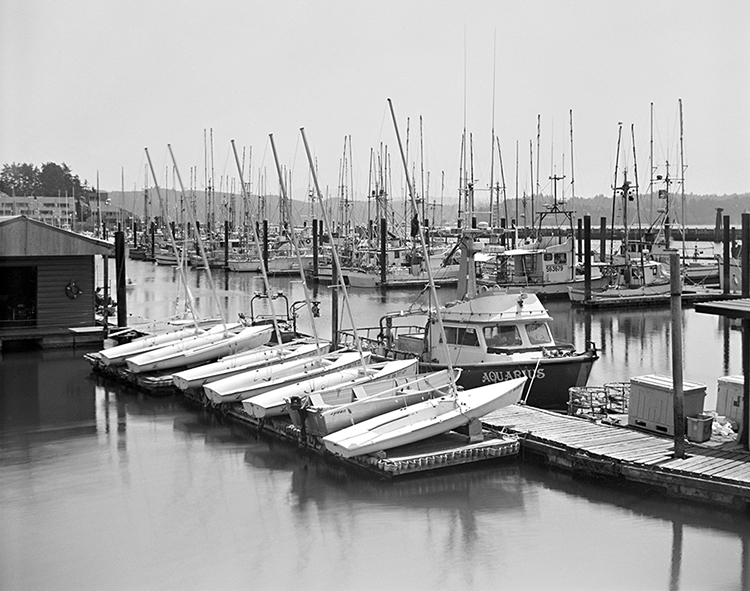
Lomo Sputnik stereo camera,
2½ inch square negative.
Below left:
0.5 inch sq. crop.
Below right:
0.1 inch sq. crop.

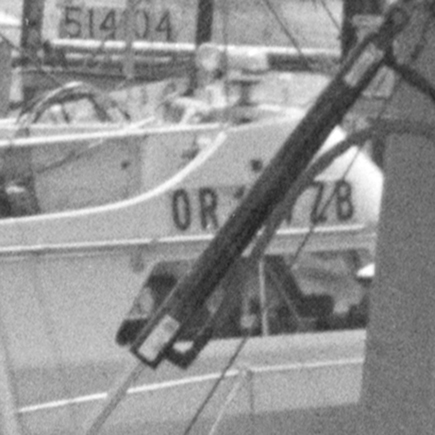
Not only does a fine-grain, long-scale emulsion deliver in the details, it also renders smooth surfaces with a shimmery glow. I chose the Sputnik camera for this example for a couple of reasons. First, I love stereos, and I have a terrible crush on the Sputniks. To my eye and taste, the optics are just the right compromise between harsh and mushy. Also, each exposure makes its own identical bracket shot. Although there is enough difference between paired images to create a stereo when used together, separately they might as well be identical. Bracketing is a good idea even with perfect factory film, but with the potential flaws in a roll of handmade film, it's welcome insurance of a useable negative. But of course you can bracket—or not—with any camera. I just think Sputniks are cool.
Note: I developed the negative in a split bath of D23 (5 g Metol and 75 g sodium sulfite per liter water)/10% Borax. Unless otherwise specified, this is the developer I used for all the negatives in this tutorial.
Even without super-sharp optics, or the option of multiple focal lengths, a fine grained negative allows the option of creative cropping in the darkroom or computer.
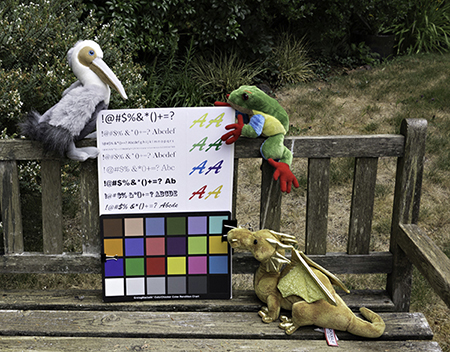
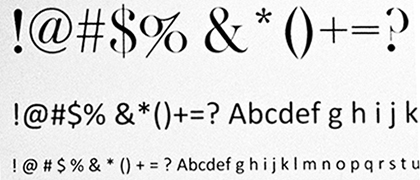
You'll be seeing a lot of this color chart. I added the font-size test and the rainbow of A's to my GretagMacbeth. The crop of the fonts isn't from the digital image. It is a 0.3 x 0.15 inch section of a Baby Graphic AmBr negative—the second, third, and fourth lines. The fourth line is ⅛ inch high.

Soft vs. Sharp
A Beacon 127 film half-frame negative (AmBr emulsion) vs. 35 mm (made in 1989 on old-style Tri-X/forgotten developer).
The camera I used in 1989 was a Pentax with a lens with excellent sharpness. The Beacon lens is double element and coated, so not as mushy as a single element meniscus lens, but soft enough. The softness of the image is easy enough to see. That's from the camera. But, comparing emulsions, AmBr has a much finer grain than Tri-X.
I think the combination of a bright, long-scale emulsion with the subtle softness of older lenses is very appealing. I see a lot of creative potential lurking here.

Again: Light table and Digital Camera "Scanning"
One of the goals of The Light Farm is trying to bring emulsion making into the 21st century. In order to accomplish this, the incessant morphing of the "catalog" of tools and materials available to us must be regularly evaluated. When I started this, my crystal ball got a few things very wrong. I didn't guess that dedicated film scanners would become an endangered species. I also didn't guess that digital cameras would become almost (as of yet) good enough to replace them.
Tape a piece of film down flat on a light table, emulsion side up, and photograph. From there you can do all the computery things you want.
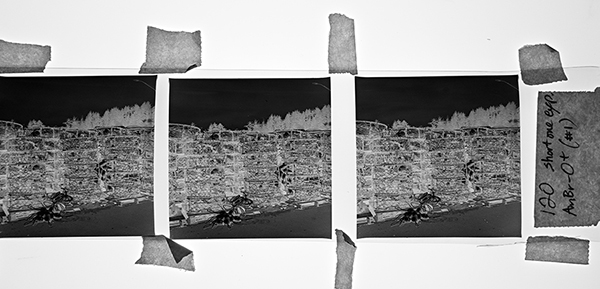

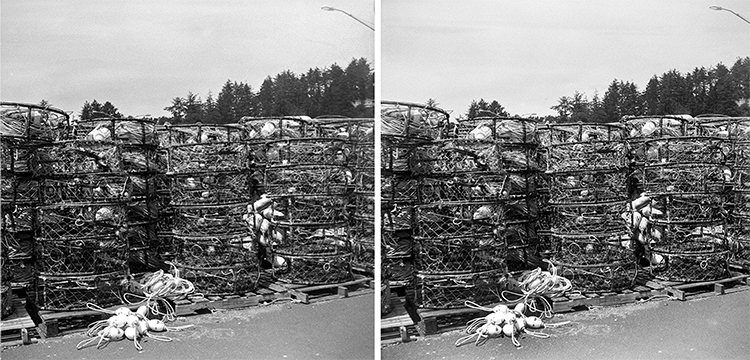
Stare at the stereo pair and let your eyes go unfocused. Or, cross-eyed.

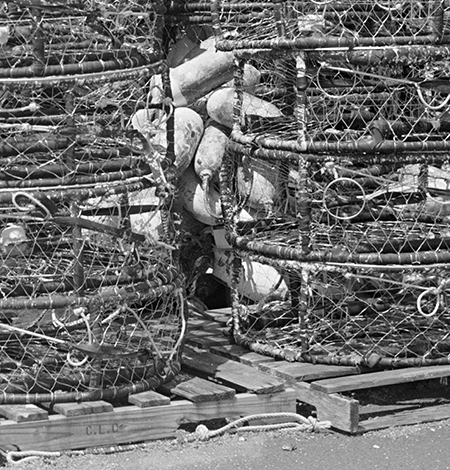
Hopefully, I've managed to convince you that speed isn't everything, because if so, you'll be as pleasantly surprised as I was by everything that can be done with a plain silver emulsion.
And I think we've just scratched the surface.
Continued...
